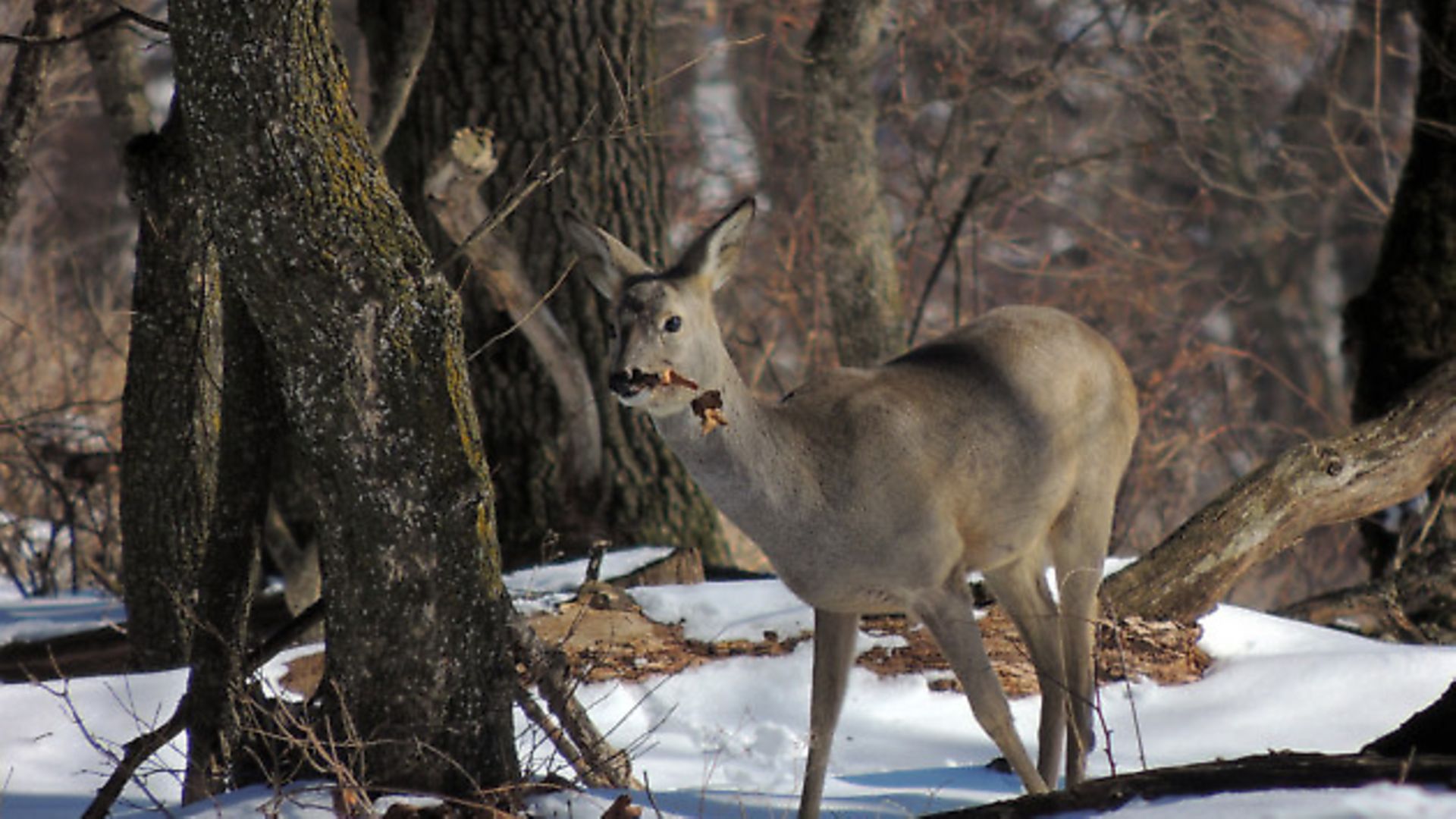Everything you need to know about roe deer, including habitat, appearance, antler formation, behaviour, breeding/reproduction, and the legal shooting seasons
 credit: Archant
credit: Archant
SPECIES HISTORY, POPULATION AND DISTRIBUTION
Of our six deer species, roe deer (along with red deer) are the only species genuinely native to the UK. They’ve been here since before the Mesolithic period, 6,000-10,000 years ago. As the Mesolithic period merged into the Neolithic period, the earliest migrants began arriving from Central Europe. They brought with them new ideas that would transform the UK landscape and the way we lived and fed ourselves forever – namely, the transition from hunter-gather living, to agriculture and sedentary living.
Deforestation made way for farmland, destroying the roe deer’s natural habitat. Protected from hunting by the masses in Norman times under the Forest Law of William I, they were to lose their gentrified status in the 1300s, becoming on par with the likes of rabbits. This, combined with the loss of habitat, led to their near extinction by the 18th century, although some survived in Scotland and Northern England. Natural migration from these areas, combined with re-introductions to the more southern parts of the UK during the Victorian era, meant that the roe deer population steadily re-established itself.
Their population is now estimated at around 500,000. Their survival has been helped by their adaptability; though primarily a woodland animal, they can survive in almost any UK landscape, and where population density is high they are found in fields, scrub and farmland.
Distribution maps show them in almost every corner of the UK, with the exception of Ireland (roe deer are not, and never have been, present in Ireland). Scotland and Northern England show the highest densities, with high numbers in most of Southern England and a slow but steady spread into Wales and the Midlands. Numbers have seen a significant and sustained increase from 1960 to the present day, due in part to the Deer Act 1963 which was ‘An Act to provide close seasons for deer; to prohibit the killing and taking of deer by certain devices and at certain times; and to restrict the use of vehicles in connection with the killing and taking of deer.’ Roe deer now enjoy a stable population – their conservation status is ‘of the least concern’.
APPEARANCE, ANTLER FORMATION, AND BEHAVIOUR
Roe deer are relatively small, standing at around 65-70cm at the shoulder and weighing around 10-25kg; males will be slightly larger than females. Their coat turns from a red/brown in the summer, to a dark brown/grey in the winter months. The underside is lighter, and they sport a white rump patch. The females will also have a short tuft of hair coming from the rump patch. They are characterised by their large ears and ‘teddy bear’ noses – the black ‘moustache’ or stripe above the nose gives the appearance of a button shape.
Antlers typically grow to between eight and 10 inches, with three points or ‘tines’ on each. Young bucks will grow a small knob atop their pedicles in their first year, which is shed by early spring to make way for the first full antler growth.
 credit: Archant
credit: Archant
Antlers are shed and begin to re-grow between October and December, with new growth beginning immediately after shedding, and new antlers usually fully developed by April (most other species will shed in the spring and form new antlers by the summer, when food and nutrients are in abundance).
It will usually take two or three years for the young roe bucks to achieve the full three points on each antler, but it has been known for yearlings (or kids) to occasionally manage it in their first year. As bucks reach their older years, their antlers will generally start to lose shape.
Roe deer are largely solitary animals and maintain overlapping territories. Some will form small groups, especially for feeding in the winter, but they do not form large herds like fallow and red deer. The females will usually establish ranges close to their mother’s, while young males must venture further afield to avoid territorial older bucks.
Roe display the most activity at dawn and dusk, and are known to make more use of darkness when out in open spaces or when experiencing regular disturbance. They will spend long periods of time ‘lying up’ between bouts of feeding. Diet is varied and generally made up of buds, shoots and leaves of deciduous trees, grasses, ferns, shrubs, ivy, conifers, heather, and brambles.
THE RUT AND REPRODUCTION
The roe deer rut occurs between mid July and mid August. During this time the males become extremely territorial and maintain solitary territories around one or two does. Fights are common between rutting males, and can end in serious injury or death, with the winner claiming the area as his own.
During oestrous, females will release a high-pitched call to entice the rutting males to chase them. The chase involves circling around trees and forming paths and ‘figure of eight’ shapes in the ground. The chase continues until the female is ready to mate, with the male producing a hoarse, rasping call as he pursues her.
Roe bucks are the only hoofed animal in which delayed implantation of an egg occurs. Although the egg is fertilised at the time of mating, it does not implant into the uterus wall until several months later, usually around January; this gives a gestation period of 10 months (four months of no embryonic growth) with kids born between May and June. It is thought that this peculiar system is an adaptation to avoid giving birth during the colder, harsher months in the North.
It is common for roe does to give birth to twins, sometimes triplets. The mother will leave her offspring lying down, camouflaged in long grass or undergrowth, while she goes to feed. Kids are born with dappled coats, helping to camouflage them, which fade after the first six weeks. Most does will cease to lactate by November, by which time the kid can live independently, but most will remain around their mother, learning fieldcraft until the spring, when they will disperse to establish their own areas.
OPEN SEASONS FOR ROE DEER
Buck: England and Wales April 1 – October 31. Scotland April 1 – October 20
Doe: Englnd and Wales November 1 – March 31. Scotland October 21 – March 31
SAKO 6 CLUB
Top rifle brand Sako teamed up with Rifle Shooter to create the Sako 6 Club – an exclusive club for stalkers who have managed to shoot one of each of the six UK wild deer species.
The club aims to promote the wide diversity and proper management of deer in the UK, and set a stalking benchmark that stalkers can strive to achieve. The website provides a hub where stalkers can share tips and achievements with each other via the forum.
Upon completion of the challenge, you will become a member of the Sako 6 Club and receive Sako 6 gifts and an exclusive memento to recognise the achievement.
Visit the website to find out more